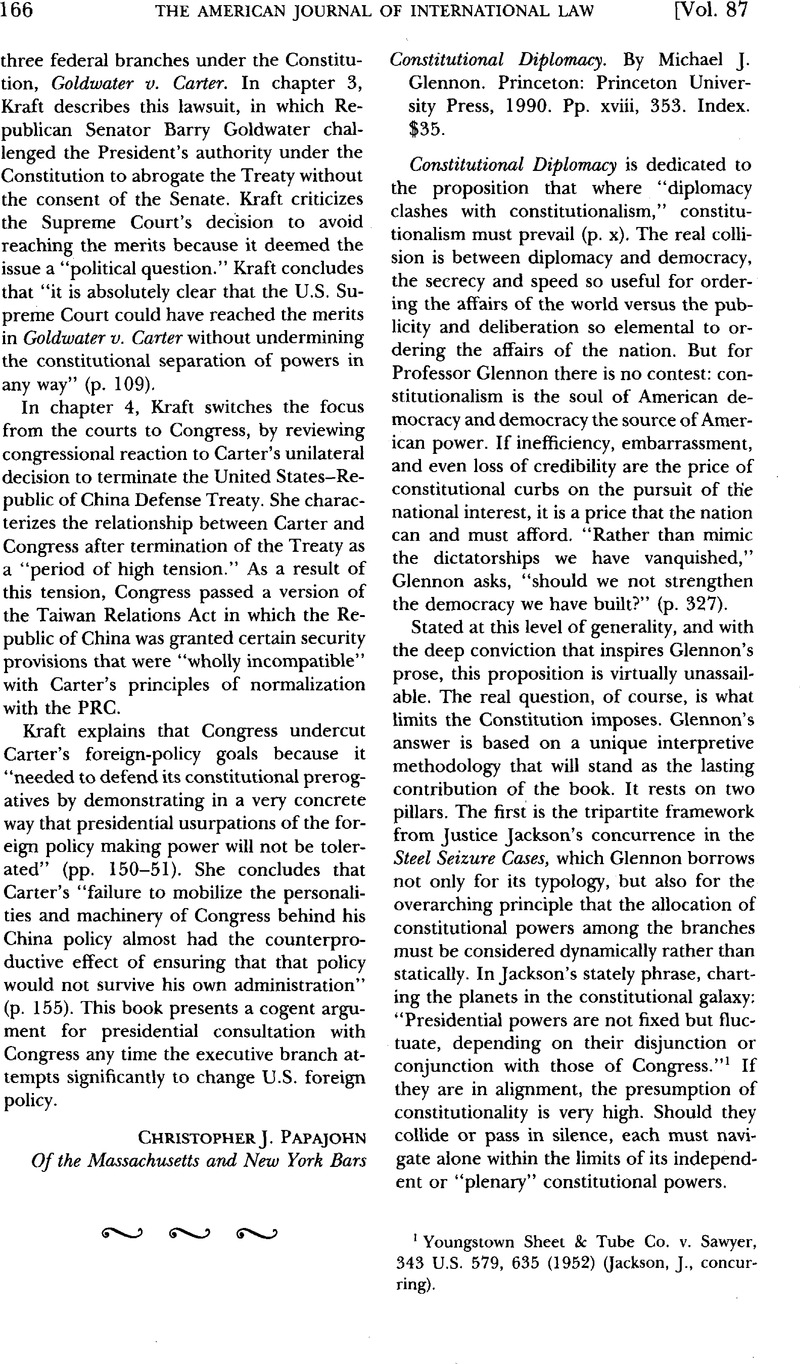No CrossRef data available.
Article contents
Constitutional Diplomacy. By Michael J. Glennon. Princeton: Princeton University Press, 1990. Pp. xviii, 353. Index. $35.
Published online by Cambridge University Press: 27 February 2017
Abstract

- Type
- Book Reviews and Notes
- Information
- Copyright
- Copyright © American Society of International Law 1993
References
1 Youngstown Sheet & Tube Co. v. Sawyer, 343 U.S. 579, 635 (1952) (Jackson, J., concurring).
2 59 Stat. 1055 (1945), TS No. 993.
3 See Vienna Convention on the Law of Treaties, opened for signature May 23, 1969, Arts. 31–32, 1155 UNTS 95, reprinted in 63 AJIL 875 (1969) and 8 ILM 679 (1969).
4 Robert Putnam, Diplomacy and Domestic Politics: The Logic of Two-level Games, 42 Int’l Org. 427 (1988).
5 6 U.S. (2 Cranch) 170 (1804).
6 47 Cornell L. Rev. 1, 7 (1961), quoted at xii.
7 The term was coined by Arthur Schlesinger in his 1974 book, The Imperial Presidency; it has since become a leitmotif for those who perceive congressional foreign affairs powers as ebbing away.
8 Eugene V. Rostow, President, Prime Minister or Constitutional Monarch?, 83 AJIL 740 (1989).
9 Harold H. Koh, The National Security Constitution 4 (1990).
10 Louis Henkin, Constitutionalism, De mocracy, and Foreign Affairs (1990).
11 Louis Henkin, A More Effective System for Foreign Relations: The Constitutional Framework, 61 Va. L. Rev. 751 (1975); Koh, supra note 9, ch. V. See also Gerhard Casper, Constitutional Constraints on the Conduct of Foreign and Defense Policy: A Nonjudicial Model, 43 U. Chi. L. Rev. 463 (1976) (arguing that §5(b) of the War Powers Resolution allows Congress to attach legal consequences to its indecision and inertia rather than to force itself to take action and make a judgment).




